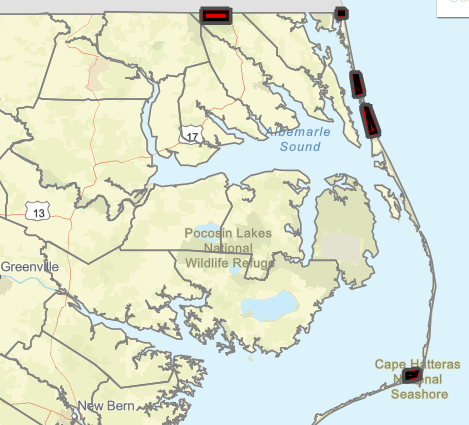
The North Carolina Department of Agriculture and Consumer Services says invasive, nonnative and destructive gypsy moths have been detected in coastal areas including Currituck and Dare counties, and a decision on how to treat the infestation is being considered.
The decision on treatment alternatives is to come after area residents have had an opportunity to weigh in, including during an in-person meeting set for Tuesday, Feb. 8, in Duck. The meeting begins at 6:30 p.m. at the Paul F. Keller Meeting Hall, 1200 Duck Road.
Residents may also submit comments through an online portal.
Proposed treatments
Organic products are to be used for all proposed gypsy moth treatments in 2022, according to the department.
One product is Btk, or a variant of Bacillus thuringiensis known as kurstaki, which is marketed under trade name Foray 48B and is a bacterium commonly found in forest soils worldwide. Btk, which, according to department information, is harmless to humans, must be consumed by caterpillars to be effective. Once ingested, the caterpillar’s alkaline gut activates the bacteria.
Another proposed method is mating disruption. This method uses a compound that serves as the female gypsy moth’s sex pheromone, decreasing mating success and suppressing the gypsy moth population. The compound is specific to gypsy moths only and does not affect off-target species, according to department information. Such a treatment is only effective at lower population densities. Three products are available for this treatment, including one in which the active ingredient is sandwiched between two outer layers of PVC plastic. All are are aerially applied.
Areas affected

Treatment areas on the North Carolina coast include the following:
Lake Drummond area: A 5,673-acre proposed treatment block is in Camden County and continues north into Virginia. On the North Carolina side, this block consists mostly of the Great Dismal Swamp National Wildlife Refuge and Dismal Swamp State Park. There are no residences in the block. In 2020, the department caught a total of four male moths in this block. In 2021, that number increased to 147, signifying that a reproducing population is present. One application of mating disruption is proposed for this block in late May or June.
Knotts Island area: This 311-acre proposed treatment block is in Currituck County and continues north into Virginia. In 2020, 482 male moths were captured in this block. In 2021, that number increased to 852. One application of mating disruption is proposed for this block in May or June.
Martin Point area: This 3,168-acre proposed treatment block is the Duck area in Dare County. In 2020, two male moths were captured in this block. In 2021, that number increased to 27. One application of mating disruption is proposed for this block in May or June.
Mossey Island area: This 1,933-acre proposed treatment block is in Currituck County. In 2020, no male moths were caught in this block, but in 2021, 23 were captured. One application of mating disruption is proposed for this block in May or June.
Buxton area: This 1,194-acre proposed treatment block is on the west side of Buxton in Dare County and includes a mix of residential areas, commercial development and a large maritime forest. There are small streams, canals and swamps in the block and the Pamlico Sound borders the north side. Wooded areas are composed of oaks, pines, and various other hardwoods and conifers. Past treatments of mating disruption and Gypchek and Btk at this site reduced the population significantly, but follow-up trapping indicates there is still a reproducing population present here. In 2020, 39 male moths were captured in this block. In 2021, that number decreased to 20. One application of mating disruption is proposed for this block in May or June.
[embedded content]



